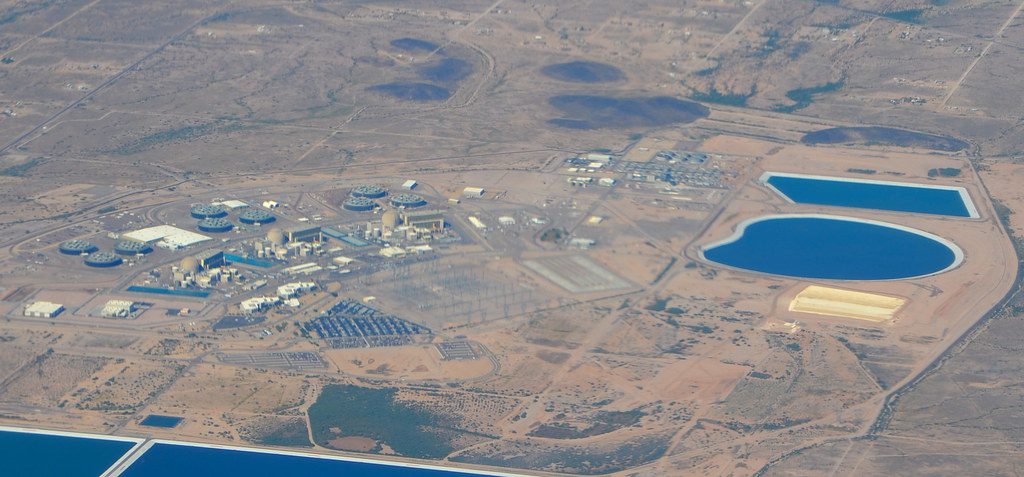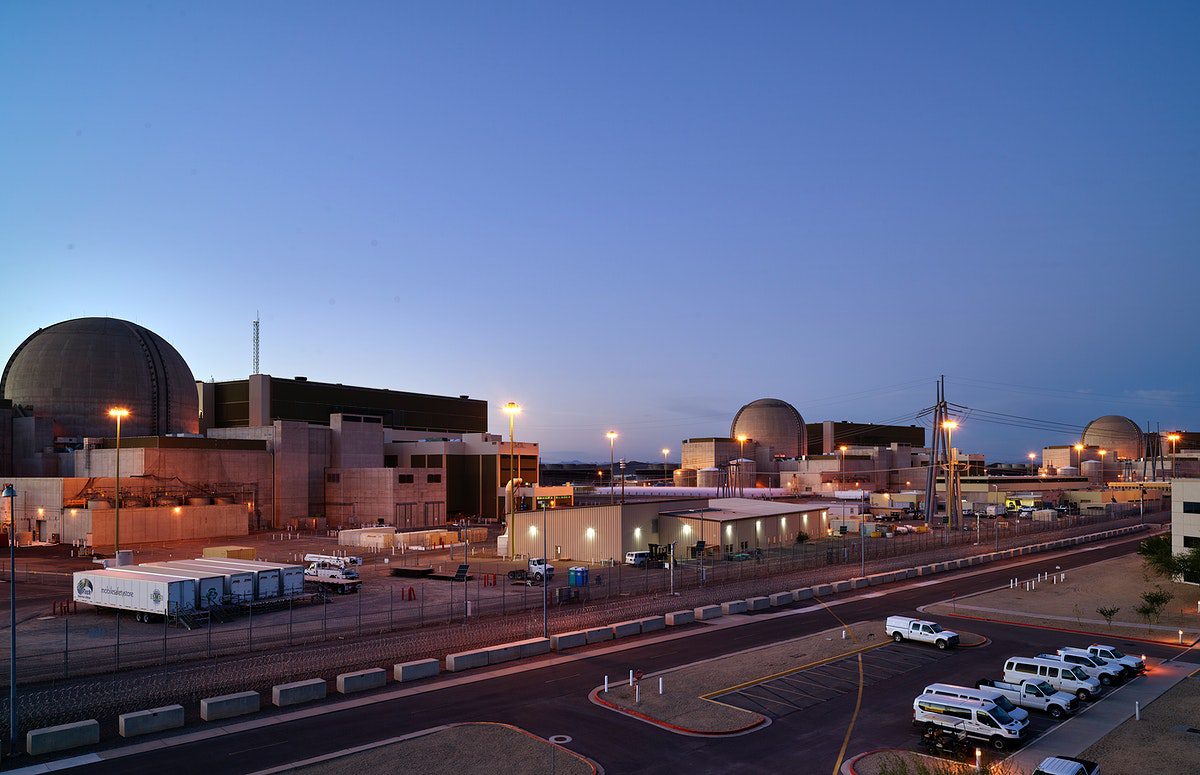The Palo Verde Generating Station is a nuclear power plant located near Tonopah, Arizona, in western Arizona. It is located about 45 miles (72 km) due west of downtown Phoenix, Arizona, and it is located near the Gila River, which is dry save for the rainy season in late summer.
Palo Verde serves six utilities, is located outside Phoenix, and is operated by the largest owner, Arizona Public Service. BWP’s share of Palo Verde is 9.5 MW. Construction began in 1976 and the plant was commissioned twelve years later in 1988. The plant is comprised of three nuclear-generating units, which use the heat produced by nuclear fission to drive massive General Electric steam turbine generators. When installed, these turbine-generators were the largest in the world.

The reactor containment buildings are some of the largest in the world as well, enclosing about 2.6 million cubic feet of space under 4-foot thick concrete walls. Palo Verde’s units were recently re-licensed by the United States Nuclear Regulatory Commission until the mid-2040s.
Palo Verde is also unusual because it does not sit next to a large body of water, which most nuclear plants use for their significant cooling water needs. Instead, Palo Verde uses treated wastewater from several nearby municipalities, recycling approximately 20 billion gallons of wastewater per year. Palo Verde provides cost-effective reliable power 24 hours a day, seven days per week. Unlike coal and natural gas power plants, nuclear power generation produces no greenhouse gases or other air pollution. However, nuclear power produces radioactive waste that must be managed.
According to en.wikipedia; burbankwaterandpower.com; power-technology.com. Source of photo: internet








